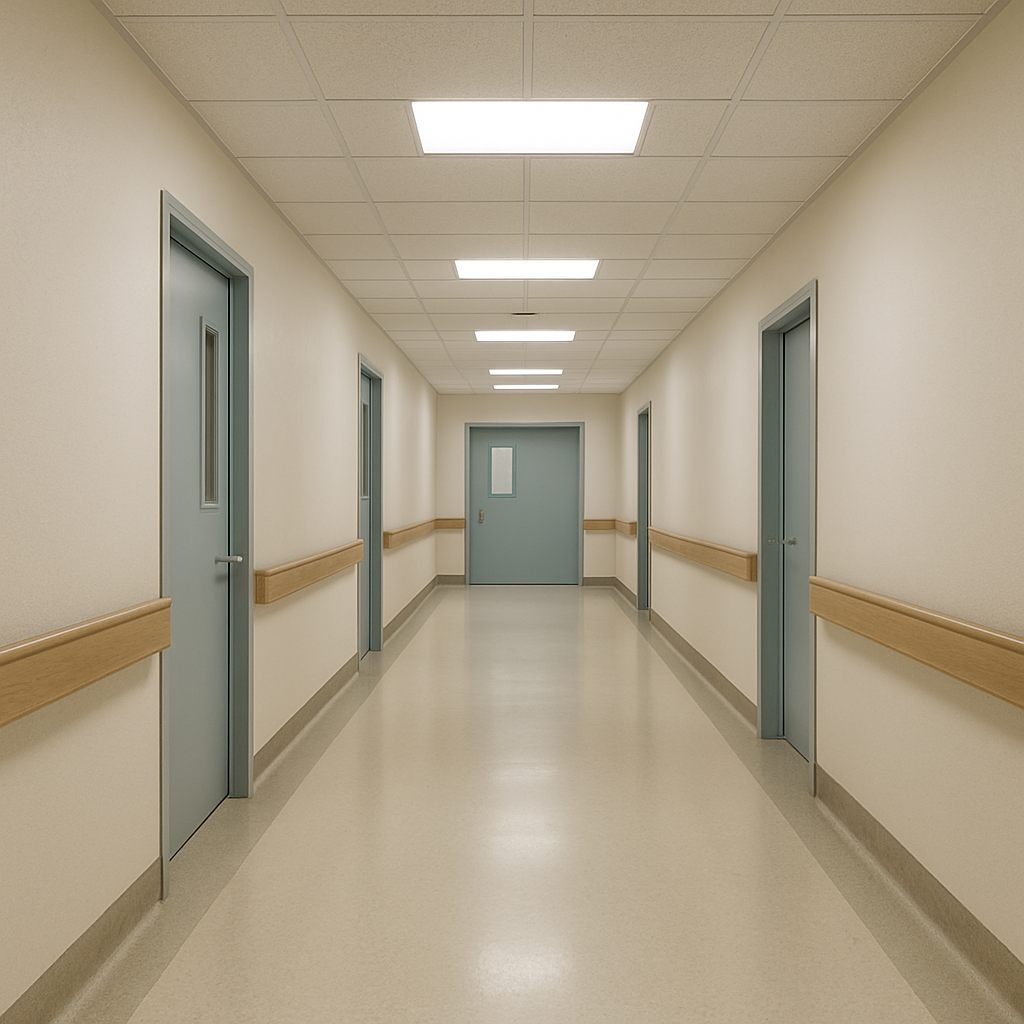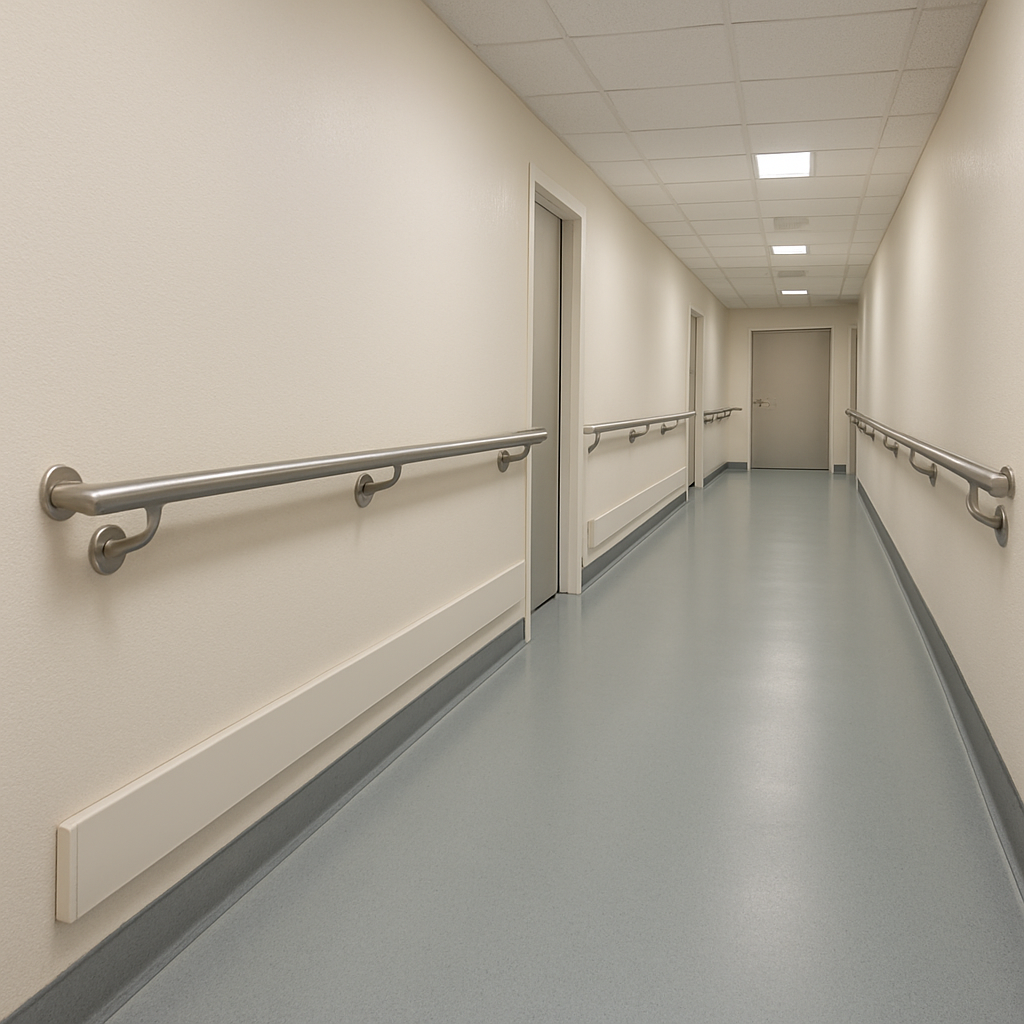 Service Hotline:13510328459
Service Hotline:13510328459
 205-206, 2nd Floor, Building 2, Xiazao Village Industrial Zone, Gaofeng Community, Dalang Street, Longhua District, Shenzhen City
205-206, 2nd Floor, Building 2, Xiazao Village Industrial Zone, Gaofeng Community, Dalang Street, Longhua District, Shenzhen City
 Service Hotline:13510328459
Service Hotline:13510328459
 205-206, 2nd Floor, Building 2, Xiazao Village Industrial Zone, Gaofeng Community, Dalang Street, Longhua District, Shenzhen City
205-206, 2nd Floor, Building 2, Xiazao Village Industrial Zone, Gaofeng Community, Dalang Street, Longhua District, Shenzhen City
Time:2025-09-19 Preview:
In hospitals across Europe and America, the importance of accessibility features cannot be overstated. Among these features, handrails play a critical role in ensuring the safety and mobility of patients, visitors, and staff. This article will explore the importance of handrails in hospital settings, the differences between European and American standards, and some case studies demonstrating effective implementation.
Accessibility features are crucial in hospitals to ensure that everyone, regardless of physical ability, can navigate the facility safely and comfortably. Handrails are one of the most vital components of these features. They provide support and stability for individuals who may have difficulty walking or maintaining balance.
Handrails in hospitals serve multiple functions. Firstly, they offer physical support to those who are mobility-impaired. Patients recovering from surgery or those with chronic conditions often rely on handrails to move around safely. Secondly, handrails help prevent falls, which are a significant concern in hospital environments.
Both Europe and America have established standards for hospital handrails to ensure they meet safety and accessibility requirements.
In Europe, the European Union (EU) has set forth guidelines that hospitals must follow to ensure accessibility. These guidelines include specific measurements and materials for handrails to ensure they are safe and effective.
In the United States, the Americans with Disabilities Act (ADA) outlines the requirements for accessibility features, including handrails. The ADA mandates specific heights, widths, and distances for handrails to ensure they are functional and accessible for all users.

Examining real-world examples of handrail implementation in hospitals can provide valuable insights into best practices and the impact of these features on accessibility.
St. Mary's Hospital in London is an excellent example of a facility that has effectively implemented accessibility handrails. The hospital has installed continuous handrails along all corridors, ensuring that patients and visitors can navigate the premises with ease. The handrails are made of durable, easy-to-clean materials and are mounted at a height that is accessible to all users.
Boston General Hospital is another facility that has prioritized accessibility through the use of handrails. The hospital has incorporated handrails into both indoor and outdoor areas, providing support for patients as they move between buildings. The handrails are designed to be slip-resistant and are regularly inspected to ensure they remain in top condition.
In Germany, the Berlin Medical Center has taken accessibility to the next level by integrating smart technology into their handrails. These handrails are equipped with sensors that can detect when a person is using them and provide feedback on their pressure and grip. This information is used to improve patient care and ensure that the handrails are being used effectively.

While handrails are essential for accessibility, there are challenges involved in their implementation. Hospitals must consider factors such as cost, maintenance, and design when installing handrails.
The cost of installing handrails can be significant, especially for large hospitals with extensive corridors and multiple floors. However, the investment is justified by the increased safety and accessibility they provide.
Handrails in hospitals must be durable and easy to maintain. They should be made of materials that can withstand frequent use and regular cleaning. Hospitals must also have a maintenance plan in place to ensure that handrails remain in good condition and continue to meet safety standards.
While functionality is the primary concern, the design and aesthetics of handrails should not be overlooked. Hospitals can choose handrails that complement the overall design of the facility, creating a welcoming and professional environment.

As technology advances, so too does the potential for innovation in hospital handrails. Future developments may include the integration of more advanced smart technologies, such as real-time monitoring of patient movement and health data.
One exciting development in the field of handrails is the use of antimicrobial materials. These materials can help reduce the spread of infections in hospitals, making them an attractive option for healthcare facilities.
Hospitals across Europe and America can benefit from sharing knowledge and best practices regarding handrail implementation. By collaborating, healthcare facilities can learn from each other's successes and challenges, ultimately improving accessibility for all patients.
Handrails are a vital component of accessibility features in hospitals, playing a crucial role in the safety and mobility of patients and visitors. By understanding the regulatory standards and examining successful case studies, hospitals can implement effective handrail solutions that meet the needs of their communities. As technology continues to evolve, the future of hospital handrails holds exciting possibilities for further enhancing accessibility and patient care.
